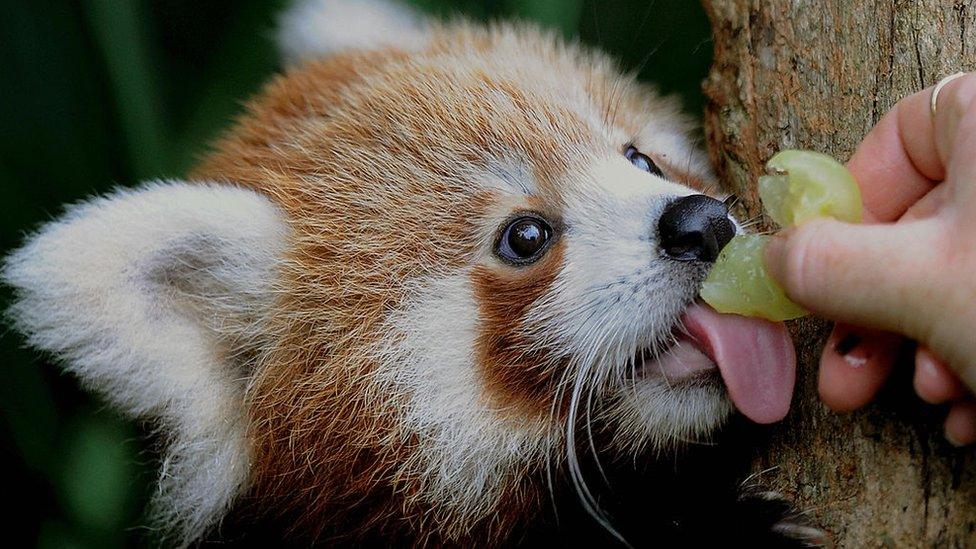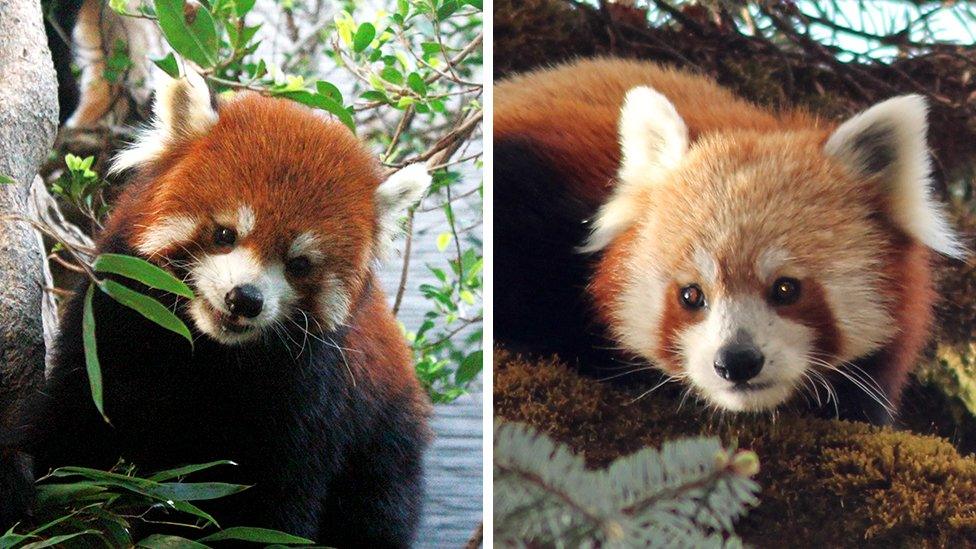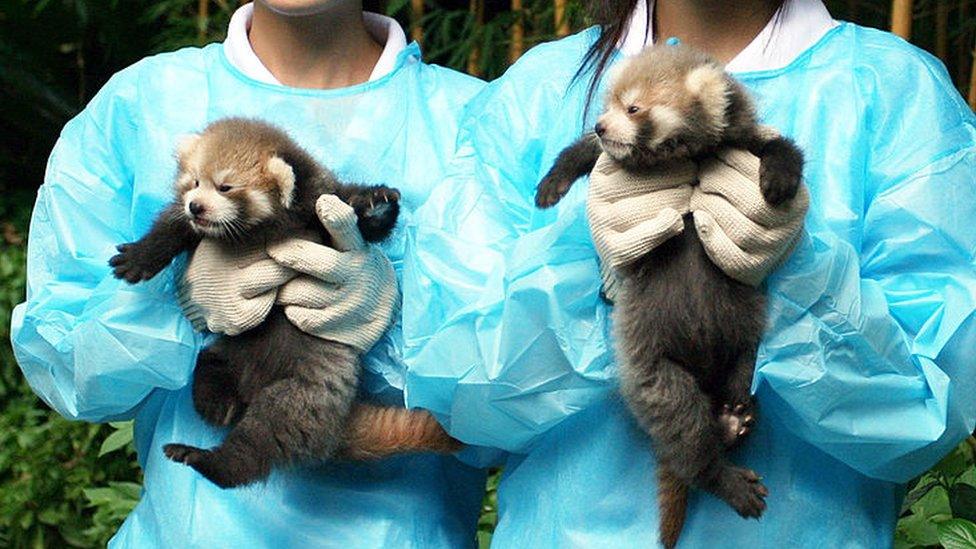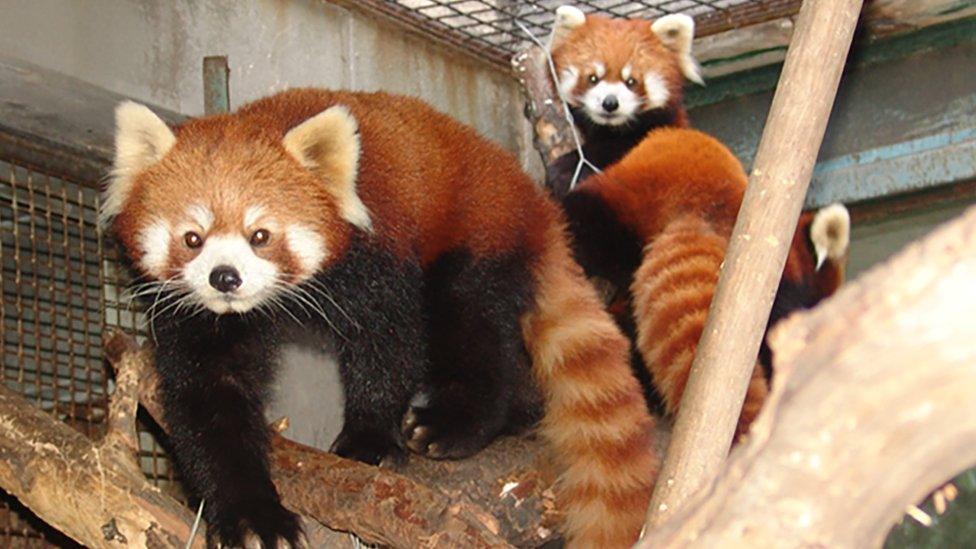Red pandas are two species, not one
- Published

Red panda: Endangered in the wild, its survival looks precarious
The red panda is not one species but two, according to DNA evidence.
Already endangered due to hunting and habitat loss, conservation efforts are now even more critical, say scientists.
The red panda lives in the mountainous forests of China, India, Nepal, Bhutan and Myanmar, where numbers are down to a few thousand individuals and decreasing every day.
Two varieties have long been suspected, based on physical features, but genetic evidence has been lacking.

The Chinese (left) and Himalayan (right) red pandas should now be regarded as separate species, say researchers in China
Chinese red pandas have redder fur and striped tail rings, while Himalayan pandas have whiter faces.
Lead researcher Yibo Hu of the Chinese Academy of Sciences in Beijing, said the Himalayan red panda needs more urgent protection, because of its lower genetic diversity, and small population size.
"To conserve the genetic uniqueness of the two species, we should avoid their interbreeding in captivity and construct clear captive pedigrees," he said.
Conservation imperative
Researchers in China analysed the DNA of 65 wild red pandas. This revealed two separate species which went their own separate ways after populations were divided by a river about 250 thousand years ago.
Mike Jordan, director of plants and animals at Chester Zoo, external, which has a pair of red pandas, says the genetic evidence allows us to say they're considered to be completely different species, rather than variations of one species.
"The population is down to what may only be a few thousand," he said. "Now that we need to divide that few thousand between two different species it may increase the conservation imperative and I suspect one or more of the species we will discover is even more threatened than we thought previously."

Red panda cubs reared at a zoo in China
The red panda
The small mammals resemble bears but are in a genus of their own known as Ailurinae
The wild population continues to decline due to habitat loss, poaching, and inbreeding
Lives in trees and mainly eat bamboo, using sharp, curved claws to grip the stems
Not closely related to the giant panda
It is now protected in all countries in which it lives, and hunting is illegal.

The Chinese red panda has distinct tail rings
The red panda (Ailurus fulgens) was initially considered a relative of the raccoon because of features such as its ringed tail, and then thought to be related to bears.
It is now known to be in a family of its own and one of the most evolutionary distinct and globally endangered mammals in the world.
Moumita Chakraborty is a fellow at EDGE, external, a conservation programme hosted at international conservation charity ZSL (Zoological Society of London, external).
The mammal is illegally hunted for its fur in southwest China, especially for its highly valued bushy tail from which hats are produced, she said. The "good-luck charm" hats are used by Chinese newlyweds.
"Being two different species means conservation action plans can be specific to the two different species needs and requirements," she added. "Due to the fragmentation of their natural habitat, small numbers, and niche food requirements their number border on the brink of extinction."
The research is published in the journal Science Advances, external.
Follow Helen on Twitter, external.